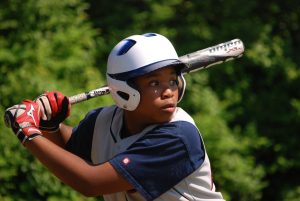28 Jul 13 Ways Players and Coaches can Prevent ULC Overuse Injuries
 According to the American Sports Medical Institute, the number of youth baseball injuries has continued to rise. The number of Tommy John surgeries performed on youth players has doubled since 2000. Younger players are more prone to injury than adult players because their bones, growth plates and ligaments are not fully developed yet. This makes them more susceptible to overuse injuries. In fact, the number of overuse injuries in young baseball players is growing. The most common injuries are those in the shoulder and elbow. Most often, we see damage or tear to the ulnar collateral ligament (ULC) which is caused when a pitcher simply throws too much or too hard.
According to the American Sports Medical Institute, the number of youth baseball injuries has continued to rise. The number of Tommy John surgeries performed on youth players has doubled since 2000. Younger players are more prone to injury than adult players because their bones, growth plates and ligaments are not fully developed yet. This makes them more susceptible to overuse injuries. In fact, the number of overuse injuries in young baseball players is growing. The most common injuries are those in the shoulder and elbow. Most often, we see damage or tear to the ulnar collateral ligament (ULC) which is caused when a pitcher simply throws too much or too hard.
The ULC ligament is the main stabilizer of the elbow for the motions of pitching. When it becomes damaged, it can become very difficult to repair. For this reason, when a pitcher complains with elbow or shoulder pain the day after throwing or movement in the joint is painful for restricted, they should always discontinue pitching and be evaluated by a sports medicine physician. Thankfully, all overuse injuries are preventable, and those related to the ULC are no different. The following are some of the recommendations for preventing injuries in youth baseball pitchers set by the ASMI. To see all their statements regarding youth baseball pitchers and Tommy John Surgery see the American Sports Medical Institute website.
For Players:
- Warm up properly. Start with stretching, running, and gradually ease yourself into throwing.
- Rotate playing other positions besides pitcher to prevent your arm from becoming damaged.
- Avoid pitching on multiple teams with overlapping seasons.
- Don’t pitch with elbow or shoulder pain and see a doctor if you have pain.
- Don’t pitch on consecutive days.
- Play other sports in the off season.
- Don’t specialize in pitching. Focus on becoming a better athlete, not just a better pitcher.
- Communicate to coaches regularly on how your arm is feeling.
For Parents and Coaches:
- Coaches should watch for signs for fatigue. These can include decreased ball velocity, decreased accuracy, upright trunk during pitching, dropped elbow during pitching, or increased time between pitches. If a pitcher complains with fatigue or looks fatigued let him/her rest from pitching.
- If a pitcher complains with pain in his/her shoulder or arm, discontinue pitching until the player has been evaluated by a sports medicine physician.
- Avoid using a radar gun. The radar gun itself isn’t going to do harm to the player, but it could encourage a pitcher to pitch harder.
- Encourage players to take on other sports as well. The number one risk factor for ULC damage is specialization in pitching.
- Adhere to pitch count guidelines such as those established by Little League Baseball. According to Little League for a child age 7-8, the maximum number of pitches that should be thrown in a single game is 50. A child age 9-10 should throw no more than 75 pitches per game. For a child age 11-12 it’s 85 pitches per game. Ages 13-16 it’s 95 pitches. And 105 pitches for ages 17- 18. After a player has reached his/her maximum amount of pitches in a game, the coach must remove that player from the mound and that player cannot enter the game as a pitcher again.
If you have a young athlete who as recently damaged their ULC or has undergone Tommy John surgery, give us a call at (662) 282-4949, we can develop a recovery plan to help your athlete strengthen his/her arm and protect himself/herself from future injury.



Sorry, the comment form is closed at this time.